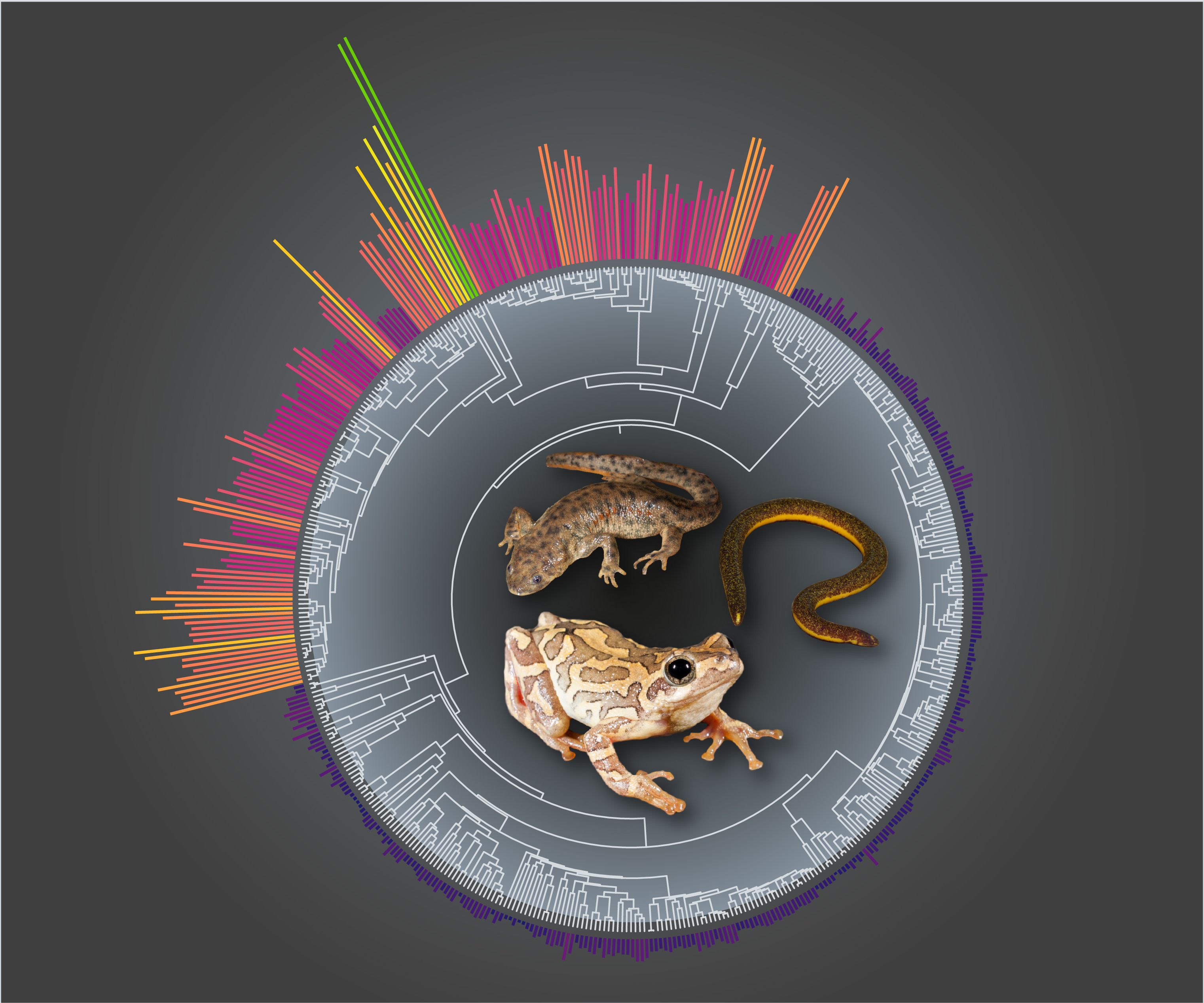Genome Size Evolution
Genomes of different organisms vary hugely in size. Most of this difference is not linked to organism complexity, but instead, in the amount of non-coding DNA. Whether or not life history traits affect the evolution of the physical size of genomes is unclear. On a cellular level, large genomes impose physiological rate limits and processes like cell proliferation and differentiation are significantly slower. This is particularly important for amphibians, which have some of the largest genomes of all known vertebrates and many undergo complex life history transitions that involve both rapid growth as well as cell and tissue differentiation. Using this interesting model system, we uncover some of the delicate interplays that might be shaping the evolution of genome size.
The results of this project have now been published in Nature Ecology and Evolution, together with a “behind the paper” blog post.
